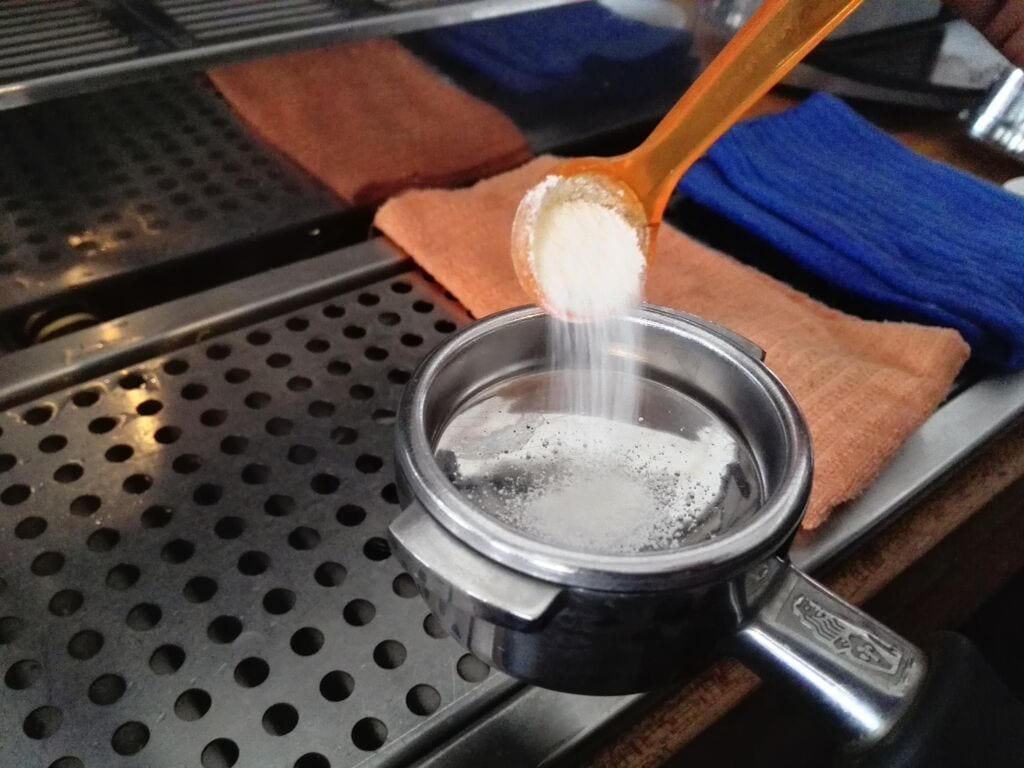
Recommissioning your espresso machine after a long break
As the hospitality industry prepares to reopen, Alun Lewis, Technical Manager, gives his advice for recommissioning your espresso machine.
This isn’t about cleaning and sanitising the outside of the machine, most café owners are already experts at that, this is to ensure that your espresso machine functions as the manufacturer intended it to and as the users expect it to.
Reconnecting
If a machine and water softener (or filter) has been left sat with still cold water in it, it will need to be flushed and tested for leaks.
If you have a Claris softener like this (picture A), please follow the instructions below…
A  B
B 
Turn on the water supply.
Open the flush/pressure release valve (see picture B) and direct the flush hose into a suitable container (e.g. bucket) or to the drain.
Turn on the water supply and hold the flush tube to prevent water forcing the tube to jump out of your bucket or container.
You’ll need to flush at least 10 litres (almost 18 pints or an average sized bucket) to ensure that any bacteria that may have settled there will be flushed out.
Once this has been done, close the pressure release valve (pic B) check for leaks from the mains water tap to the machine. If you have a leak, seek guidance or ring us.
If all looks ok, you’re almost ready to switch the coffee machine on. But before you do, check for any signs of damage or nesting by any pests, etc. If you can, remove the top and drip trays to look inside. If there is evidence of pests or droppings, lava etc. contact your own pest control provider for advice. Also check that the mains cable hasn’t been nibbled, nicked or severed.
If all looks ok, we’re ready to power up.
Switch On And Heat It Up
First open up the steam wands, then switch on the mains power at the socket or wall mounted switch, and then at the front of the machine. For machines with three switch positions, turn the switch fully clockwise so that the arrow is pointing to heater off symbol (zigzag with a feint line through it), wait for 20 seconds (it might auto-fill), then switch to anti-clockwise to position 1 (arrow is then pointing down). Fully electronic models may require you to also press one of the keypad buttons to exit ‘Stand By’ mode. You should hear the machine refilling the boiler at this point.
Stay close to your machine during the 20-30 minute heating period. During this time, look out for any potential leaks, unusual smells or noises. As the steam builds up the anti-vac valve will allow a little steam to escape for a few minutes from the top or under the drip tray. This is quite normal.
Once the steam starts to seep through the ends of the steam arms, close the steam taps to allow the machine to build up the pressure to around 1bar (often marked in green on the pressure gauge, see pictures C below).
C 


Flushing and refilling
Once the machine is up to pressure, run each group constantly for around 2 minutes to flush them with fresh water. Then you will need to switch off the machine (so the arrow on the switch knob is pointing to the right) and open the steam arms and hot water tap for 2-3 minutes. Be careful at this point that the drip-tray may overfull so collect the water in a suitably sized container (being aware that the water and steam are very hot). This is to flush the boiler of the old standing water.
Leave the machine for 5 minutes or so and then switch back on (following the instructions for 2, Switch On And Heat Up).
When the machine is back up to pressure, you’ll need to ‘season’ the group heads and shower plates. Make 2 or 3 espressos on each group before tasting. If everything seems ok, you’re ready to go. If the coffee tastes too strong or weak, you’ll need to adjust your grinder.
Possible Issues
Group solenoid valves can jam preventing coffee from being dispensed from the group heads. To clear this use your blank (cleaning) insert in a group handle with some warm water in there and run the group for 40 seconds, then 20 seconds, 10 seconds and a few short 2 second blasts. This will clear most solenoid blockages.
Leaking from your waste or water plumbing needs to be looked at by your own maintenance people; leaks from the machine will need one of our engineers to visit.
If your water smells or tastes ‘funny’, try repeating the flushing and refilling instructions above. If this doesn’t help, you may need a replacement softener or filter.
Post by Alun Lewis, Technical Manager


